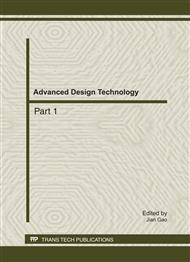p.442
p.450
p.455
p.461
p.465
p.469
p.473
p.477
p.483
The Preparation and Characterization of Carboxymethyl Chitosan Wound Dressings
Abstract:
In order to improve the absorption properties of chitosan wound dressings, this paper used chloro-acetic acid to convert chitosan fibers into partially carboxymethylated chitosan fibers. Fibers with various degrees of carboxymethylation were prepared by controlling the ratio between the weight of fiber and chloro-acetic acid. Results showed that the carboxymethylated chitosan fibers can absorb a large amount of liquid into the fiber structure. When the degree of carboxymethylation is below 50%, the carboxymethylated chitosan fibers can absorb a large amount of liquid whilst maintaining its fibrous struture at the same time.
Info:
Periodical:
Pages:
465-468
Citation:
Online since:
August 2011
Authors:
Keywords:
Price:
Сopyright:
© 2011 Trans Tech Publications Ltd. All Rights Reserved
Share:
Citation:


